Have you ever wanted to learn how to grow marijuana but can’t because you’re too overwhelmed? Yes, growing cannabis can be very overwhelming, especially when you’re a beginner, but it does not mean you can’t learn how. Every expert grower started naïve and unsure about the ways to grow marijuana. But soon enough, they were able to learn from their own mistakes and also from growing techniques adapted from other growers.
Growing marijuana is basically like growing other plants as you need to put time and effort into harnessing your skills. You also need the right materials to support your growing activity. The materials to start any growing activity need not break the bank. There are affordable and reasonably-priced growing tools that you can buy on a budget.
Ways on How to Grow Marijuana
There are different ways to grow marijuana. You can grow plants indoors or outdoors, you can grow openly or stealthily, growing recreational or medicinal marijuana, and you can grow weed in different growing mediums: soil, hydro, aero, coco coir, and many more.
You can choose any of the mentioned growing marijuana techniques, and you can make your own stash at home.
Growing Marijuana Indoors
Indoor growing of cannabis plants is what the name implies. Usually, growers grow indoors if the weather or climate does not favor cannabis growing. Also, this is the last resort if cannabis growing is not permitted in your location. Indoor growing is much more expensive than outdoor growing because you’ll be providing everything for your plant from lighting, water, food, and air that it can actually get when it is cultivated outdoors.
Indoor growing is for growers who want to avoid as much mistakes as possible. If you’re new to growing cannabis, then we recommend indoor growing so you can better monitor your plants.
Growing Cannabis Outdoors
Outdoor growing is what it is. It is growing cannabis in an outdoor area like your backyard, patio, garden, or inside a greenhouse (a modified indoor/outdoor area). Growers prefer to cultivate tall and large cannabis outdoors so the plants can maximize their growth potential.
Other Types of Growing Weed
Open growing
Open growing is similar to outdoor growing that you can grow cannabis in your property. As more and more countries and states say yes to marijuana, people are now openly growing cannabis in their homes and properties.
Stealth growing
Stealth growing is the opposite of open growing in such a way that growers and breeders hide their plants from plain sight. They resort to stealth growing methods like using space buckets, growing very small plants, and growing not too smelly plants.
Recreational growing
Recreational growing is about growing recreational strains. Marijuana is divided into recreational strains or strains that are used mainly for recreation and medicinal strains or therapeutic strains. Recreational growing may be done at home or in a growing facility.
Medicinal growing
Medicinal growing is growing cannabis for medicinal meals. With this type of growing, cannabis is grown carefully and is processed carefully in easy to take medicinal forms.
Growing cannabis in different mediums
Cannabis is also grown in different mediums like soil, hydro, aero, and coco coir, to name a few. Soil is the most common growing medium, and you can use the soil you have in your garden or backyard, or you can use commercially-prepared soil. You may also use soil in pots or plant seeds directly from the ground.
Hydro or hydroponics is not using soil, but the roots of plants are suspended in nutrient-rich water. The roots are better at taking up nutrients and oxygen this way, but not all plants will survive a hydroponic set up. Meanwhile, an aeroponic set up is simply growing plants in air. The roots are exposed to air as you spray these with nutrient water frequently.
The type of growing medium will ultimately depend on the plant, considering that some plants will do well in hydro than in soil and vice versa.
Tools to Use
For cannabis plants to grow, thrive and to produce good yields, you must consider the following
Lighting
The correct lighting is important because light brightness has a huge effect on your plants, especially when your plants are still in the vegetative stage. Plants need the sun to manufacture their food, and it is also needed for the flowering stage as light plays a huge impact on yields.
Good airflow
You need proper airflow to remove stale air and odors inside the growing area. Air or a slight breeze is also perfect to dry soil and prevent molds. A small breeze also helps strengthen cannabis plants as it blows at the bottom of the canopy.
Growing medium
Soil is not the only growing medium as there is also water, air, and materials like coco coir. The ideal growing medium must match the needs of the plant and your convenience as well.
Temperature
Cannabis grows only at particular temperatures. If you’re growing indoors, take time monitoring and providing ways to reduce excess heat or severe cold. Measure temperatures and humidity levels using a simple digital thermometer and hygrometer.
Marijuana Nutrients
There are different nutrients needed by cannabis plants according to their phase of growth. Plants that are in the growing phase will need fertilizers with more nitrogen since this nutrient is needed for growth and development. Cannabis that are in their blooming phase needs blooming nutrients that have lower Nitrogen but higher Potassium and Phosphorus levels.
Water
Water must be pH neutral for the best results. And it’s different from one medium to another. Soil growing needs water that’s 6 to 7 pH while hydroponics growing needs 5.5 to 6.5 ph.
Complete package marijuana growing set
Take note that we have grouped tools according to the cost, the size of the growing area, and the level of expertise of the grower. Let’s start from the most economical option: a Space Bucket
Space Bucket DIY: Setup cost is only $100
A space bucket is basically a bucket that has been converted to a hidden, efficient, and very affordable alternative to growing cannabis for the first time. It costs only $100 or maybe even less with a maintenance cost of $3 to 30 a month. Consider that when using a space bucket, the cost of operation depends on the electricity rates in your city and also from the type of nutrients you will use.
With a space bucket, you have a portable growing space that you can place anywhere, and no one will suspect that you are growing weed inside.
What’s great about a DIY space bucket is that it takes only 2 to 3 hours to set everything up with the hardest part constructing the top or the cover of the basket. But if you have a power saw or a handheld saw similar to a Dremel, then you won’t have trouble making the top.
When it comes to maintenance, space buckets are also easiest to clean and maintain. It can only take you around an hour or two to do. All you need to maintain this container/growing area is to water the plants, mix the nutrients, and make light adjustments, and more. And because the plants are well-covered, it’s hard to check on your plants. You must open the bucket at least once a day to adjust the lights and to ensure that the fans are working to reduce heat build-up.
This needs moderate effort to construct but is a stealthy way to grow cannabis. You can get as much as a once for every bucket, so be sure to make more space buckets to make more yields.
The Coco Coir and CFL Grow Lights Setup: more or less $300
Another easy way to grow marijuana is by using an efficient and convenient set up called the Coco Coir and CFL Grow Lights. This is another very small growing tool that can fit inside your kitchen cupboard, a clothes close, or a small tent. Because it’s CFL lighting, it won’t be too hot for your plants.
It takes only 1 to 3 hours to set up coco coir, and CFL grows lights set up. It can take you up to 2 hours to maintain this setup. All you need to do is to water your plants, mix the nutrients needed by your plants, and to adjust its CFL lights.
This is an easy to construct and easy to use marijuana growing station that has a high stealth rate. When it comes to yields, you can get up to 4 ounces per plant or up to 8 ounces per plant if you have previous knowledge and skills to use this setup.
MH/HPS Grow Lights Setup: Cost is $400 to $1000
This easy setup uses only a small growing space with at least 5 plus feet height. It is an ideal set up if you want to grow inside a closet, a growing tent, or a guest room. The larger models that use this kind of lamps can run very hot, and thus you need to make sure that the airflow and exhaust equipment in this setup is working properly.
You can expect up to 8 hours to spare to set everything up, including the time you need to spend on procuring all the materials you need. This setup requires very little maintenance in just 1 to 2 hours per week; this is just enough time to tend to your plants, mix fertilizer and to check on airflow just to make sure that the plants are not too hot.
Constructing this kind of marijuana growing set up is easy to moderately hard, but once everything is done, it can be very easy to maintain. It has a low to moderate stealth rating because you need to deal with the odor that comes from growing cannabis plants. You must also make sure that heat is vented out properly. When all the growing techniques are followed in growing cannabis, you can get anywhere from 2 to 16 + ounces in a plant.
Using LED Lamps/Grow Lights: Cost $400 to $1300
LEDs are very common lamps for a cannabis growing area. It is one of the most efficient and one of the most effective; however, it’s very expensive with around $20 to $100 maintenance cost that covers the cost of electricity and supplies.
But the best part of growing cannabis using LED lights is that it will work on almost all strains and in all growing mediums. Setting up an LED growing area can take only 1 to 3 hours, including materials procuring. Maintenance time is just 1 to 2 hours a week, which includes mixing your nutrients, tending to your plants, checking out airflow, and more.
But make sure to do your research because LEDs are fairly new, and a lot of LED lamp makers have come up with unique models. And when it comes to stealth ratings, this type of set up gets a medium to high rating. You’ll get anywhere from 1 to 10 or more ounces of usable yield per plant.
Common Problems
Growing cannabis is not as hard as it may seem as long as you consider completely the features and characteristics of a particular strain you want to grow. However, there are some new growers who seem to be having trouble with cultivating weed because of very simple reasons. Check out the common problems that beginner growers have.
Total lack of research
Most of the time, first-time growers are very eager to grow cannabis strains that they forget to do very important research before they start to cultivate their seeds. Most first time-growers also experiment on their plants without doing careful research if they are hurting or killing their beloved plants.
As much as possible, you should perform a quick search for any new growing strategy. If you just recently read about a new training method and it requires trimming too much of the plant’s foliage, then there’s no reason to follow it right away. Ask around, find out if any other person has used the technique, and, if so, ask what the result of trying this technique was.
So before exploring new techniques, take time to consider all the options and possible risks. You don’t want to kill your plants just to find out if a rouge technique works, right?
Skipping important steps
Another very common problem that almost all types of growers are guilty of is skipping important steps when growing their plants. You might think that checking the correct pH and considering the right amount of nutrients in a fertilizer feeding is not important, think again.
You may end up endangering the life of your plants and even killing these if you don’t check the pH of soil or water. You might be giving your plants water with high concentrations of base mineral which can ruin its growth. So, don’t take the small, basic items for granted because these make up the best way to grow cannabis.
Not providing enough light for plants
As we said before, light is life to plants, and not providing enough light will kill plants. Take note; cannabis plants need more light compared to house plants. Cannabis growers who grow their plants outdoors need a private, accessible growing space that can get more than 8 hours of direct sunlight daily to get the best results.
Cannabis plants can grow quickly in just a short time, and because of this, they will need high amounts of energy from light to grow and to create more buds. Compared to cannabis in the wild, these can grow very tall, as tall as a tree in just a few months. This is because it uses all the energy it gets to power its maximum growth potential.
First-time growers who want to cultivate cannabis prefer the idea of growing their plants near a window to get more natural light like a regular houseplant. But this is overlooking the obvious. Cannabis plants need more light than natural light from an adjacent window. Cannabis plants will survive when grown in a window sill where it can get indirect sunlight, but it won’t be able to grow as large and as productive as those who get full sunlight. The most you can get are plants with a few white wispy hairs during the blooming phase, and these plants may also fail to produce any kind of bud. And without buds, you won’t get weed or seeds.
Ignoring indoor plants’ need for good light
We can’t stress more about the need for cannabis plants to get the best lighting. Consider getting the best kind of light that’s bright, with multicolor, function, and timer function. This way, you can use your light to simulate the movements of the sun. Your grow lights should be easier to power on or off and to stick to a given schedule. There are many indoor lighting options that you can choose from.
Some grow lights are brighter and hotter but promise sizable yields. So for you to use this kind of light, pair it with a good airflow system to reduce extreme temperatures.
Tips and Reminders
Cannabis growing may be easy, or it may be hard, but one thing’s for sure, you’ll get amazing endings when you closely follow growing steps. Consider these time tested tips and a reminder on growing weed at home.
Understand the cannabis life cycle
There are two general stages of a cannabis life: the growing or vegetative stage and the blooming or flowering phase. Take note that cannabis plants will grow bigger when there are exposed to long days. These will eventually make buds when they are exposed to longer nights.
In the wild, the cannabis seeds will start to sprout during spring, and the seedling will grow to a young plant and into a mature plant all summer long. As the days start to become shorter, the plant starts to prepare to make flowers, and for male plants, they start to make pollen.
Pollination happens this time, and after a short while, the female plants start to make seeds. After shedding the seeds or after harvesting, the plant dies during the winter. The process starts all over again next year for the next generation of cannabis plants.
Take note that cannabis grows from seed to its death in just a year. There is an order for its life phases, and this is very important to understand for any grower.
A cannabis plant will continue to develop vegetatively or grow with just the stems and leaves as long as it understands that it is just summertime or early spring, especially when the plant/plants are kept indoors. But in the outdoors, the plants faithfully follow the seasons and thus will grow during a particular time and flower in a certain time as well.
Differentiate between male and female plants
Cannabis plants can be male or female. Half of the plants are males, and half are females, and only females will produce buds. If the male plants are allowed in a growing area, accidental pollination may happen. Also, most growers are not interested in males, as they only want females to cultivate weed.
You can’t tell if you’re germinating female or male plants as cannabis plants will show their gender at the end of their growing phase. Males develop sacs or balls while female plants have pistils. Males don’t produce THC buds, and thus, most growers extinguish them as soon as possible. Up to today, scientists are still unable to tell what makes a male plant male and what female plants female.
Getting the right seeds
The best plants start with the best seeds. Cannabis seeds are available in regular, feminized and autoflowering, and other forms. Regular seeds are photoperiod strains, which means that these will need a special lighting schedule to flower. Autoflowering strains will bloom automatically and, thus, the name. Also, feminized seeds will grow only female plants. Most autoflowering strains are also feminized strains.
The right seeds to grow also mean that seeds must be viable. It must have the ability to sprout given the right conditions. So how to tell if a seed is viable or not?
- Check the appearance of the seeds
Viable seeds are solid, round, and have a dark coloration. Do not try to germinate green, white or yellow seeds, seeds that are dented, and seeds with no marks. These are non-viable seeds and will never sprout at all.
- Look for any cracks, openings, and dents
Avoid seeds that are partly opened, with cracks, breaks, and holes. These are red flags that tell you that the seeds are not viable and thus will never germinate even if you keep it in a growing medium.
- The seeds must sink when in water
One way to check for the viability of seeds is to find out its weight in water. Just place a few seeds in a glass of water and wait a few hours. Find the seeds that have floated and discard them. These are light seeds because there is no viable matter in them. Meanwhile, heavy seeds that sink have viable matter and will surely sprout when placed in the correct environment.
- Using clones
Instead of growing from seeds, you can also grow marijuana with the use of clones. Cannabis clones are cuttings taken from a mother plant. A clone has all the characteristics and features of a mother plant and thus will grow like the parent. All cannabis strains will grow from clones, but autoflowering cannabis plants will also grow from clones but won’t retain its automatic characteristics.
Clones skip the seedling phase and immediately proceed to the growing phase. No germination phase too, so there’s no taproot. Many use clones to save time, but some say these plants may not be as strong without the taproot.
To harvest clones, take a cutting from a stem or branch using a sharp blade or pair of scissors. Cut the cutting from the parent plant by cutting straight across. Dip in cloning gel and cloning solution, or you may place this in water first. Some growers place clones inside peat pellets to use them straight away.
- Choosing a simple strain to grow
A good tip is to follow simply a simple rule. Grow simple strains. If you’re new to growing cannabis, it would be best to grow straightforward strains with no special growing techniques needed. Also, a simple strain will be easier for a beginner because these are forgiving strains. Overwatering or underwatering won’t matter as this strain can fully recover. And a simple strain is usually immune to most diseases, mold, and pests that plague cannabis plants. You’ll find simple, easy to grow strains from a local seed bank or online seeds tore.
- Indoor or outdoor growing
The decision as to where to grow your plants depends on different factors.
- The needs of the plant
Most sativas need an outdoor growing area because of its height and size. Outdoor growing is also more preferred by strains that need full sunlight and strains that emit strong scents and smells. But before growing outdoors, make sure that you have a high fence, and your plants are inside a cage with a lock. Consider restrictions enforced to outdoor cannabis growers in your area.
- The needs of the grower
Sometimes it’s impossible to grow outdoors because there’s not much space for a grower. Those who live in small homes, apartments, and condominium units simply use a vacant room, extra cabinet, or the attic as growing areas.
- Cannabis rules in your area
Almost all cannabis restricted countries and states have growers who cultivate their weed indoors. Some use growing tents, cabinets, buckets, and other appliances to grow weed successfully despite restrictions. Meanwhile, some growers continue to cultivate weed outdoors despite rules. For this, they take a lot of time to design their growing areas.
- Choosing the right growing medium
The most common mediums are soil, inert or soilless mediums, and hydroponics. Growing in soil says that it will enhance the flavor of your buds. This is why growers still prefer to grow in soil despite many different mediums available. Meanwhile, inert or soilless mediums make plants grow faster and are intuitive.
Finally, hydroponics growing offers the fastest growth, with plants getting the biggest yields and the most potent weed. Hydroponics is a modern way to grow cannabis that’s almost fully automated. You can use an automated system that will distribute nutrient-rich water to your plants and then diverts used water back to the water reservoir. Hydroponics allows the roots to take in nutrients better, and thus, plants grow faster, and growers get the best yields.
The type of growing medium to use depends on you. If you wish to retain and even enhance the true flavor of weed, then we suggest growing in soil. If you can’t wait to get the best yields, then hydroponics is the most efficient growing medium for you.
- The best cannabis soil
The ideal cannabis soil for cannabis growing is sandy-clayey. Why is this so?
Sandy – clayey is able to absorb more water and fertilizer than other soils and, at the same time, drain excess water and fertilizer. It is also well aerated as it allows oxygen to enter the roots. This benefits the root health and the exchange of nutrients at the root level.
Aside from the standard sandy-clayey soil mix, there are also commercially-prepared soil mixes as well. But remember the following before using this kind of soil mix:
- Do not use extended-release or nutrients in slow-release. This is found in Miracle-Gro soil because doing so may affect the flowering stage. You won’t be able to get good yields, let alone get larger buds or proper buds when you use this kind of commercial soil medium.
- When using regular potting soil that’s not for cannabis plants, add specialty nutrients. These nutrients will enhance the ability of the soil to absorb more nutrients and to help support growth and flowering. These specialty nutrients are available in most gardening supplies shops or from cannabis growing supplies shops.
- The best soil mix is not just soil. “Super” soil is also made of coco fiber, perlite, earthworm castings, bone meal, crab meal, fish meal, bat guano, kelp meal, blood meal, composted forest humus, sandy loam, alfalfa meal, soybean meal, compost, mycorrhizae fungi and many more.
- Soilless mediums are ideal for growing cannabis faster. The most common mediums are coco coir, Promix, Perlite, and Vermiculite. Of all the four, perlite is used as a medium together with other soilless mediums to improve drainage and better oxygen movement to the roots. Perlite looks like white pebbles but is actually lighter than popcorn. It may also be used or mixed with soil to improve aeration of the soil and promote drainage.
- You can make your own soilless medium made for coco coir and perlite. Use 50 to 70% coco coir and 30 to 50% perlite. Break coco coir into small pieces and should look like soil and add perlite. Add more perlite if you live in a place where there is a humid environment and less if you are located in a dry environment.
- All about plant containers
The type of growing container matters a lot when growing in soil. Growing containers can be clay pots, plastic, or fabric pots. There are many advantages of each, and as disadvantages as well, but lately, many are turning to fabric pots.
Fabric pots are better because these will help drain excess water and fertilizer to avoid root lock or nutrient lock. Fabric pots will also hold more soil and will allow oxygen to move through the pot for root aeration. Also, fabric pots are easy to dispose of compared to plastic and clay pots. These won’t crack and break and can be moved here and there easily since it has a handle, like a regular bag, Fabric pots are available in most garden shops.
- The ideal light for cannabis plants
Lighting and the kind of lamp are crucial. There are many kinds of lighting, and the most popular of all is LED. LED lamps are available in an easy to use multi-color LED lamp with ballast and fan. This lamp is placed on different parts of the plant to ensure good coverage. LEDs will remain bright, and the different colors will help promote growth and blooming as well.
Other forms of light are CFLs or compact fluorescent lights, which are commonly used at home. This is efficient but may not be as bright as other high powered lights to give you a better yield. The trick is to use several CFL lamps to shine on different parts of the plant to work.
HID lamps are very strong and guarantee the best yields. However, high-intensity discharge lamps are very hot and can increase the temperature inside a growing area dramatically.
Frequently Asked Questions
Can you grow different cannabis strains in one growing area?
No, as much as possible, don’t grow different strains in one growing area. This is because every strain has its own growing style and growing requirements. Also, some strains require a longer light than the darkness period or vice versa, and sharing their growing area with other strains may affect their growth and development.
Can you harvest your buds anytime you wish?
No, you can’t just harvest buds when you feel like it. Cannabis buds follow a strict rule when harvesting. If you don’t follow this rule, you’ll end up with an unpleasant taste and smell and a sub-par effect as well. So please, wait till it’s time by checking on the clearness of the trichome and by changes in the color of the pistils.
How do you dry your buds?
Drying is an important step to preserve buds. You dry buds by removing them from the plant and removing all the unnecessary foliage using a sturdy pair of scissors. Remove the foliage and place the trimmed, manicured buds in a basket and place these in your drying area. This is an unused area in your home where your buds can remain and dry out using air. Do not dry it with a lamp, using an oven or by using a hairdryer. You may also dry the rest of the plant so you can use this as trim or bulk plant material for blunts and joints. Just cut the plant and hang it upside down from a clothes drying line. You will know when the buds and plants are dry enough by crushing a bit.
Why do you need to cure your buds?
Cure your buds to improve their smell and flavor. It is an additional week or two after drying, but most users say that’s it should never be overlooked. If you don’t cure your buds, these will taste like grass or freshly-cut grass. Also, it won’t taste and smell like its natural flavor and taste. Curing is done by placing the buds inside a curing jar or humidor where the temperature and humidity may be controlled.
Can you save male plants?
Yes, you can still save and use male plants. Instead of throwing these away or destroying them, you can dry them and use these as bulk material to make blunts and joints. These may also contain small amounts of THC and thus may be used in cooking, making teas and drinks.
What do you do when your cannabis plants change color?
If you notice changes in leaf color like green leaves turning yellow and leaves tips curling, then this could be signs of a nutritional deficiency. If you spot these changes, discontinue any fertilizer feeding you are giving your plant and flush the soil or medium with plain pH-balanced water. Avoid giving any supplement or fertilizer for a while until the condition improves. The discolored leaves won’t’ return to their natural green color anymore, but you must see that the condition is not progressing on other leaves. If the buds change color like green to violet, then this is a normal phenomenon that happens when the buds or plant has been exposed to very cold temperatures.





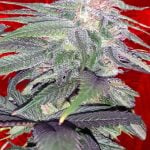


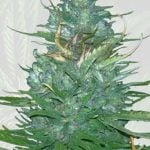

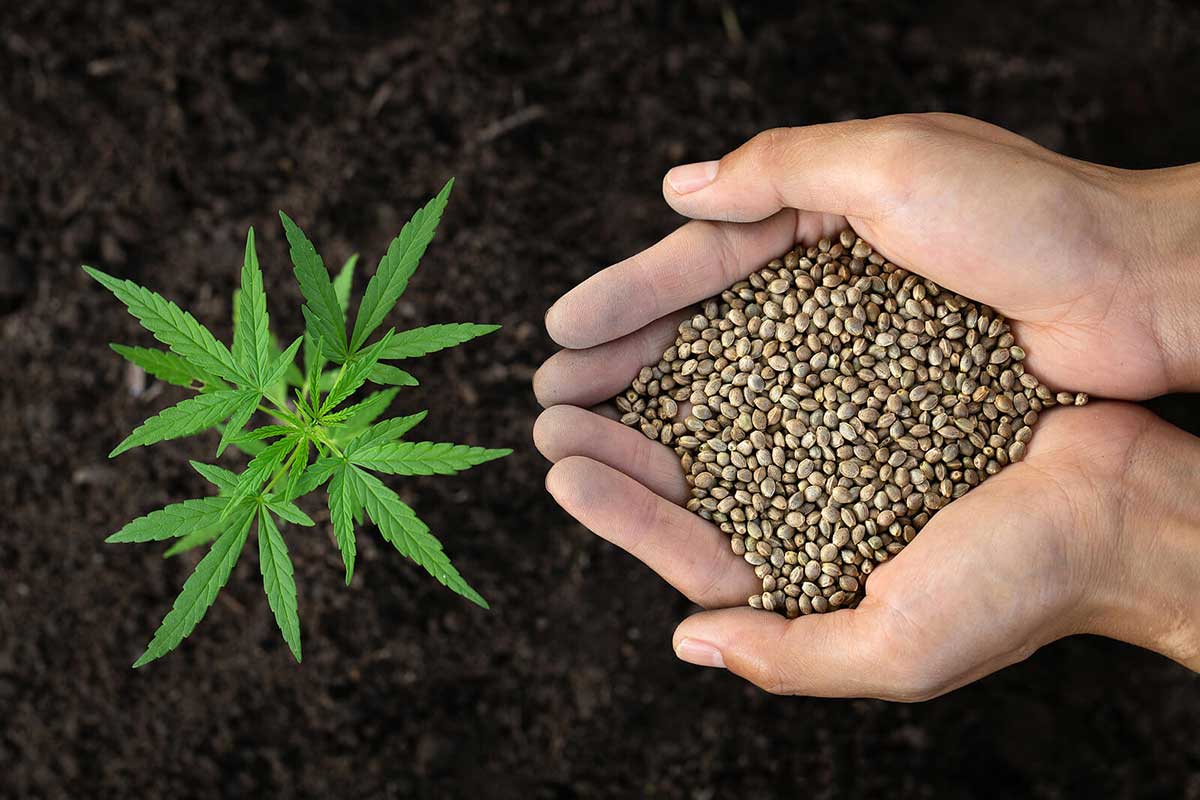




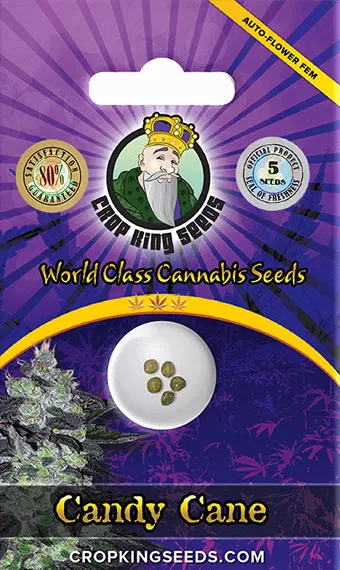
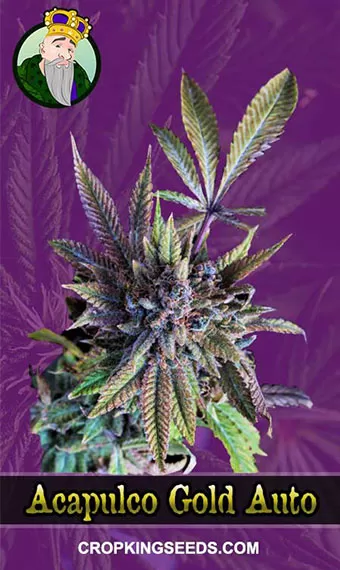


One Response
Help, Can I send you a picture of the buds , I’m not sure if I can harvest yet.
I’m in Canada and we are getting frost at night.
I think they still need some time . Started the plant from your seeds on April 2 and it’s now
sept 15 th. The plant is super silver haze .
Thanx